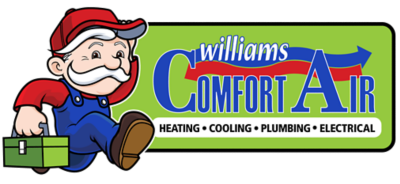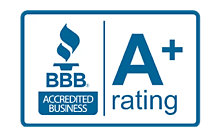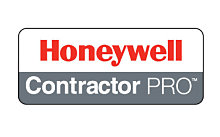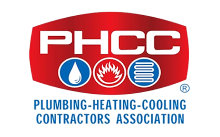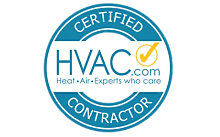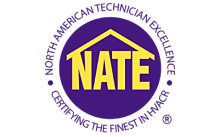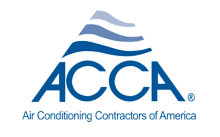Whole House Ventilation for Homes in Indianapolis, IN and the Surrounding Areas
Good indoor air quality across the whole house can be hampered without balanced ventilation. Without a ventilation system, most homes struggle to stay balanced because most natural ventilating is eliminated due to modern building methods that focus on keeping heating and cooling efficient.
Indoor air becomes stale and moisture builds when there is no ventilation system to exhaust and supply fresh air in the home. Homes in many climates, including warm humid climates and cold climates, experience difficulties ventilating enough air. Especially during the winter months when it is cold outside, homeowners worry about the lost heat energy and comfort they imagine will occur if they use mechanical ventilation to bring in outdoor air.
Whole house ventilation systems benefit Indianapolis area households throughout the year. With whole-house ventilation, systems exhaust humidity and moisture outside and supply fresh air indoors to control comfort and improve indoor air quality throughout every living space of the building. You don’t have to sacrifice your heating when it’s cold outside nor cooling when it’s hot – an energy recovery ventilator brings fresh air into the house while retaining heat and humidity from the outgoing air to maintain efficient heating and air conditioning performance and balanced system pressure.
Williams Comfort Air brings balanced ventilation to homes throughout Indianapolis and the surrounding areas of Central Indiana. Improve indoor air’s quality while keeping your home furnace and air conditioner energy efficient. Make an appointment with our Comfort Consultants today to learn more about a whole home ventilator for heat recovery and energy recovery.
Why Is Ventilation Necessary Inside a Home?
Builders today make houses using building practices that are meant to help the structure retain heating and cooling energy. As we work to be efficient, we spend less time with windows and doors open, so there isn’t enough air movement to push air from the living space outdoors and bring outdoor fresh air into the home. Spot ventilators such as range hoods and bathroom exhaust fans help out some, but they aren’t designed to take care of ventilating the whole house.
These efforts do help control energy use, but as a result, new homes typically lack the amount of natural ventilation that was more common in the old days. As such, homes need ventilation systems to improve indoor conditions, as the air becomes humid and stale the longer it remains inside the living space. The fan and other components of a ventilation system perform the exchange of air between indoors and outside to make the air more comfortable and keep moisture problems away.
What Is Whole House Ventilation?
Whole house ventilation refers to the use of equipment including fans, ducts, and ventilators to exhaust and supply air inside the home. This process keeps moisture and humidity levels balanced to improve air quality. There are five main types of mechanical ventilation solutions used for the whole house:
- Exhaust ventilators: An exhaust ventilation system simply exhausts indoor air to the outdoors. No fresh air is brought inside by the system, makeup air simply is allowed to infiltrate through passive vents and air leaks throughout the home. These systems disrupt pressure balance indoors and aren’t typically used in warm humid climates as depressurization can cause moisture infiltration. Pollutants may be drawn in during the process.
- Supply ventilators: A supply ventilation system pressurizes the home to supply indoor areas with outside air while stale air and pollutants are forced out through air leaks and vents. They are usually used in hot climates – in winter or in cold climates, humidity in the outgoing air may condense as it passes through structural areas, leading to moisture issues.
- Balanced system: A balanced system will exhaust and supply equal amounts of indoor air and outdoor air, and is suitable for use in all climates. Typically, fresh air supply is brought into areas like bedrooms and the main living space while stale air exhausts from kitchens and bathrooms.
The first three types of ventilation systems do not condition or dehumidify makeup air as it moves into the home. As such, their use can increase the cost of heating and cooling. However, the cost of installation is typically less than the following models.
- Heat recovery ventilator: A heat recovery ventilator (HRV) uses a heat exchanger to transfer heat between indoor air that is exhausted and the fresh air supply. Use of these ventilators help homeowners avoid energy loss and keep the cost of heating lower in the winter.
- Energy recovery ventilator: An energy recovery ventilator (ERV) extracts heat and moisture from outgoing air. The system uses this heat energy and humidity to condition indoor air. In the winter, the ERV helps the home retain energy and lower the cost of heating, and it also adds humidity to cold air that is less humid to keep moisture levels balanced inside the home. During hot months, moisture can be pulled from the incoming air and transferred to outgoing air, which keeps humidity lower inside the home.
Which Are the Best Whole House Ventilation Systems?
For homeowners who want efficient solutions that improve indoor air quality without disrupting heating and air conditioning performance, an energy recovery ventilator (ERV) is the way to go. While this type of system will cost more to purchase and install, they are highly efficient at recovering energy from exhaust air – about 70 to 80%. With Indiana’s hot humid summer and cold winter climates, an ERV is absolutely recommended. Running the system and its fan does consume electricity, but the energy the system saves typically will make up for the cost and provide the best comfort control for your family.
Honeywell Energy Recovery Ventilator
For homeowners throughout Indianapolis and Central Indiana, Williams Comfort Air recommends the Honeywell CFM Energy Recovery Ventilator. This ERV is an energy-efficient solution that will help you maintain comfortable heating and cooling while you improve indoor air pollution and quality.
In humid climates such as the Indiana summer, this ERV fan will effectively exhaust stale indoor air from the living space and replace it with fresh air from outside. The ERV system also reduces humidity of the supply air so there is no increase to the burden of your air conditioning.
An ERV fan system achieves better indoor air quality by expelling contaminants. Remove smoke, lingering smells, fumes, and more for a cleaner, safer indoor environment. Effective moisture control will make your home feel comfortable any time of year.
The Honeywell Energy Recovery Ventilator pairs easily with your home’s heating and cooling systems. Its compact configuration does not require overhead ducts, so installation can be completed rather quickly. It maintains positive pressure within the home while fans operate to minimize disturbances. Operate the ERV fan while the heating or cooling unit cycles or the ERV is able to run independently to improve air quality anytime. The Honeywell Energy Recovery Ventilator comes with a 5-year warranty to protect against unseen costs should a repair be needed.
Request an estimate from our Comfort Consultants today to learn more about ERV energy recovery ventilator installation for your home.
Why You Need a Whole House Ventilator
Whole home ventilation plays an important role in your comfort, just like your furnace and air conditioner do. Here are just a few reasons why your Indianapolis neighbors love their mechanical ventilation systems:
- Temperature Control: A ventilation system with energy recovery helps you keep temperatures consistent inside your living space as the system brings a supply of fresh air inside. You won’t lose heat or cooling, so there won’t be extreme temperature swings when you move from one room to another.
- Air Circulation: When homes are closed up tight, there isn’t a great deal of air movement. This causes the indoor environment to feel stale and become polluted with contaminants. Using a recovery ventilator, your home receives ample air circulation, which will improve air quality for better breathing and comfort.
- Eliminate Allergens: Allergens build up in the home environment when there is no way to exhaust stale air. A ventilation system exhausts polluted air to lower the amount of allergens in your indoor air. The allergy and asthma sufferers in your household benefit from lower exposure to the particles that trigger their symptoms.
- Remove Odors: Many things inside the home contribute unpleasant smells – indoor pets, cooking, using certain products, and more. When the ERV works to exhaust and supply air, the odors that exist in your home are forced out so your living areas stay smelling fresh. There will be no more lingering smells!
Our Guarantees
No Guesswork
When we say "This is how much it is" that's how much it is. Period.
"It Will Work"
No excuses or stories, just service when you need it!
100% Money-Back Satisfaction
We'll make it right or remove the system and return 100% of your money.
Client Respect
If we dirty it, we'll clean it. If we damage it, we'll fix it. Plain and simple.
Safe and Secure
The right company and the right people in your home, ensuring your job is done right and your peace of mind is protected.
Friendly Service. Certified Technicians. Happy Clients.
Award Winning & Industry-Leading
Who Is MAX?
Max is an important part of our team. He is more than just a cartoon character. Max represents our commitment to quality work, craftsmanship, pride, and our passion to serve our clients and community. We celebrate this mentality through Max because these are the values that drive us to be the area’s most complete and comprehensive home service company. So, now when you see Max, you’ll know the story behind the man with the mustache!
